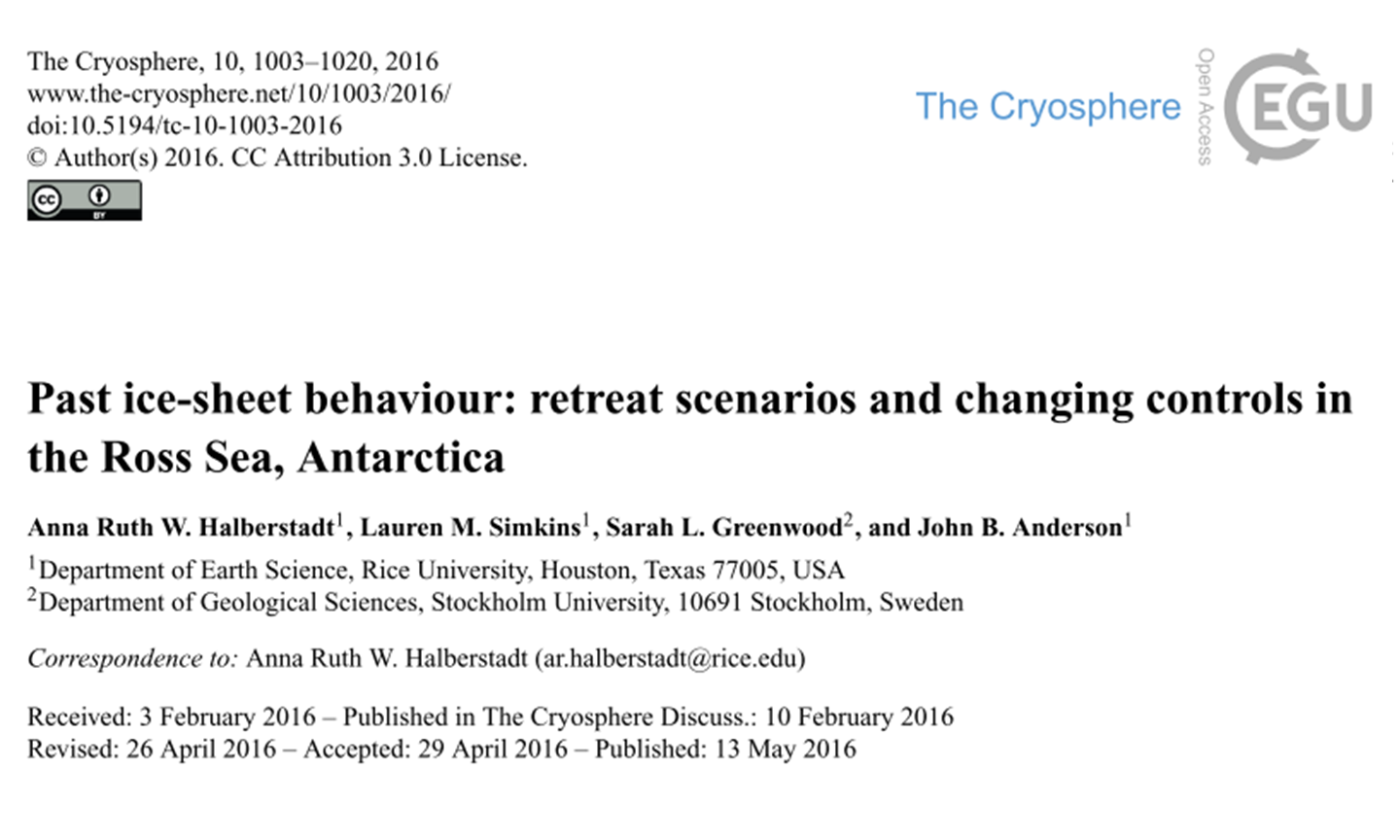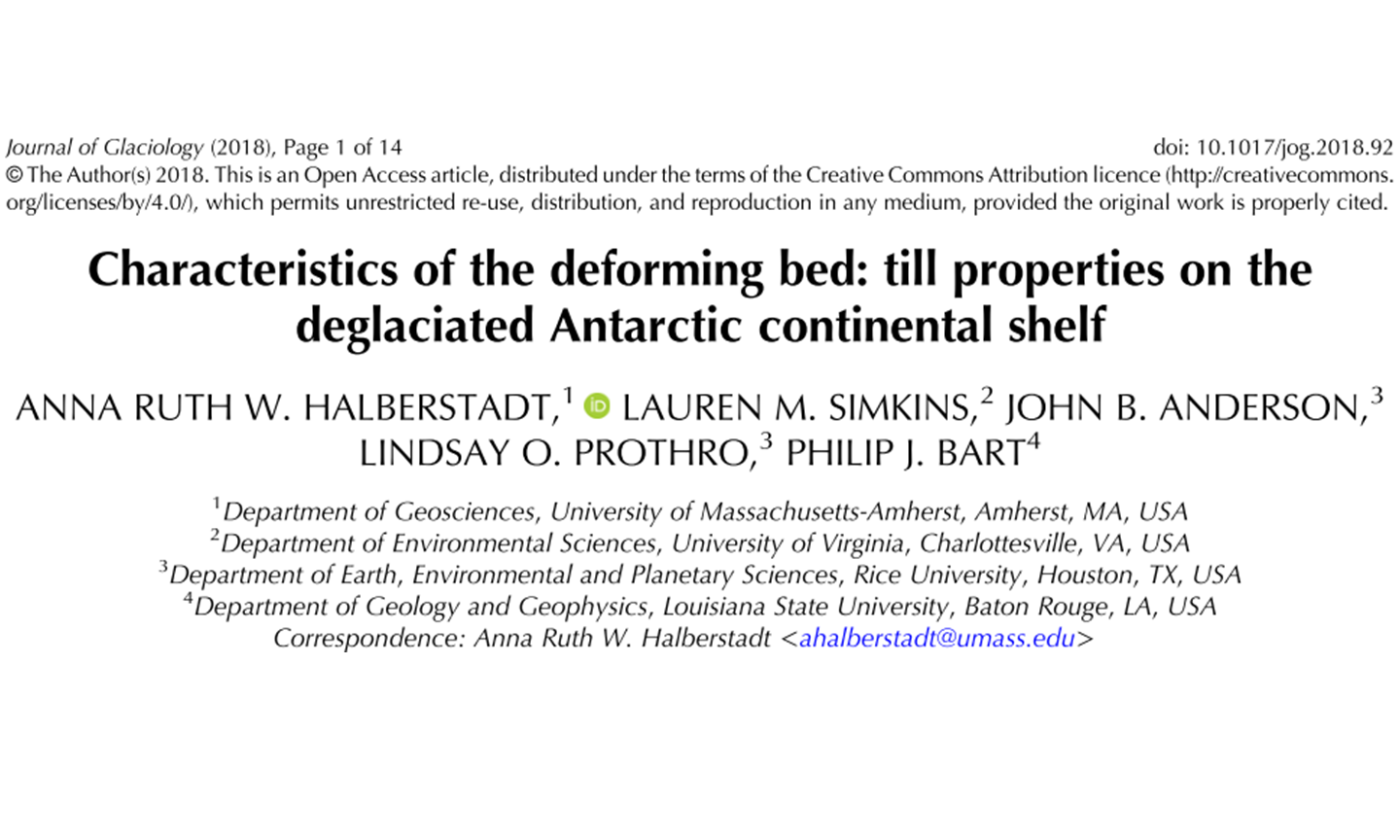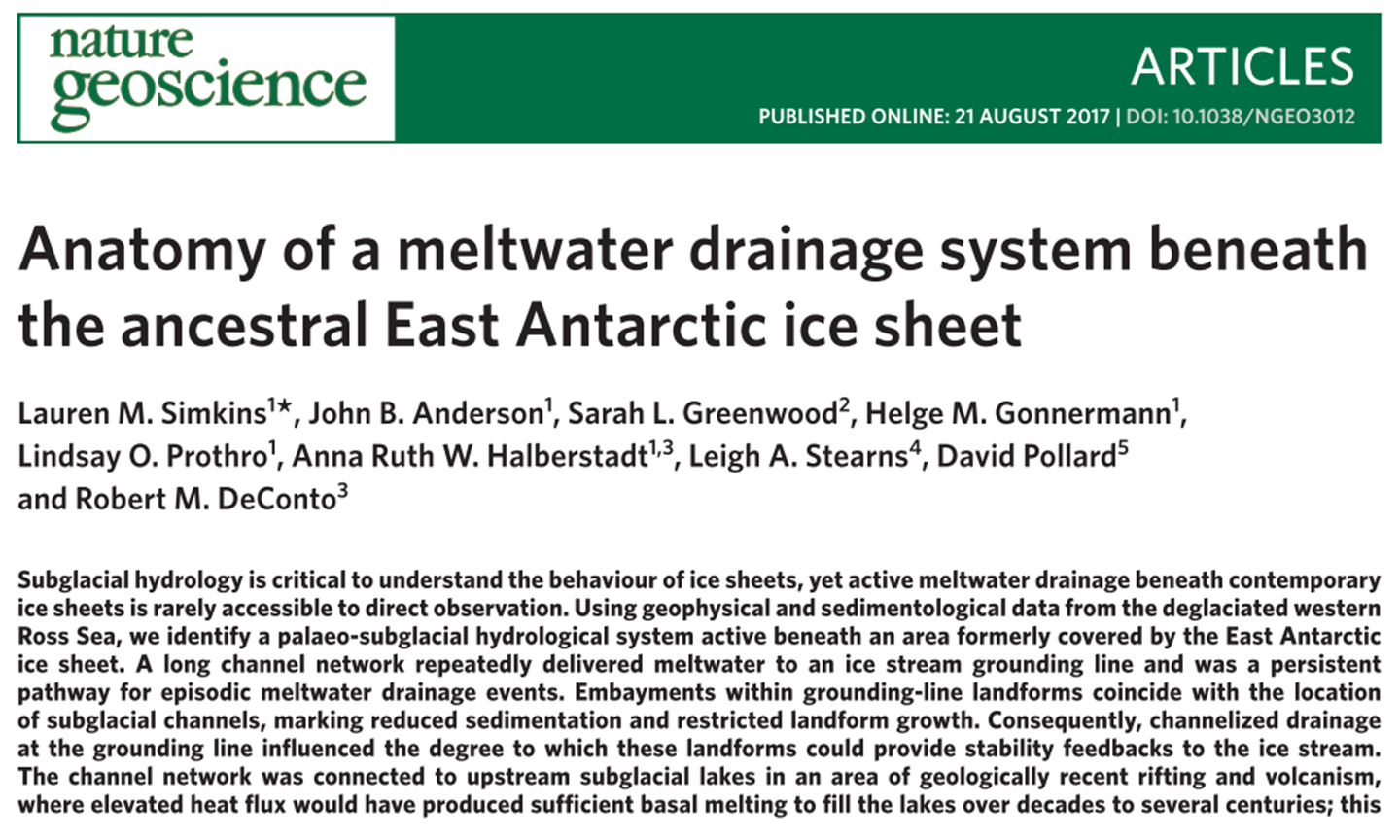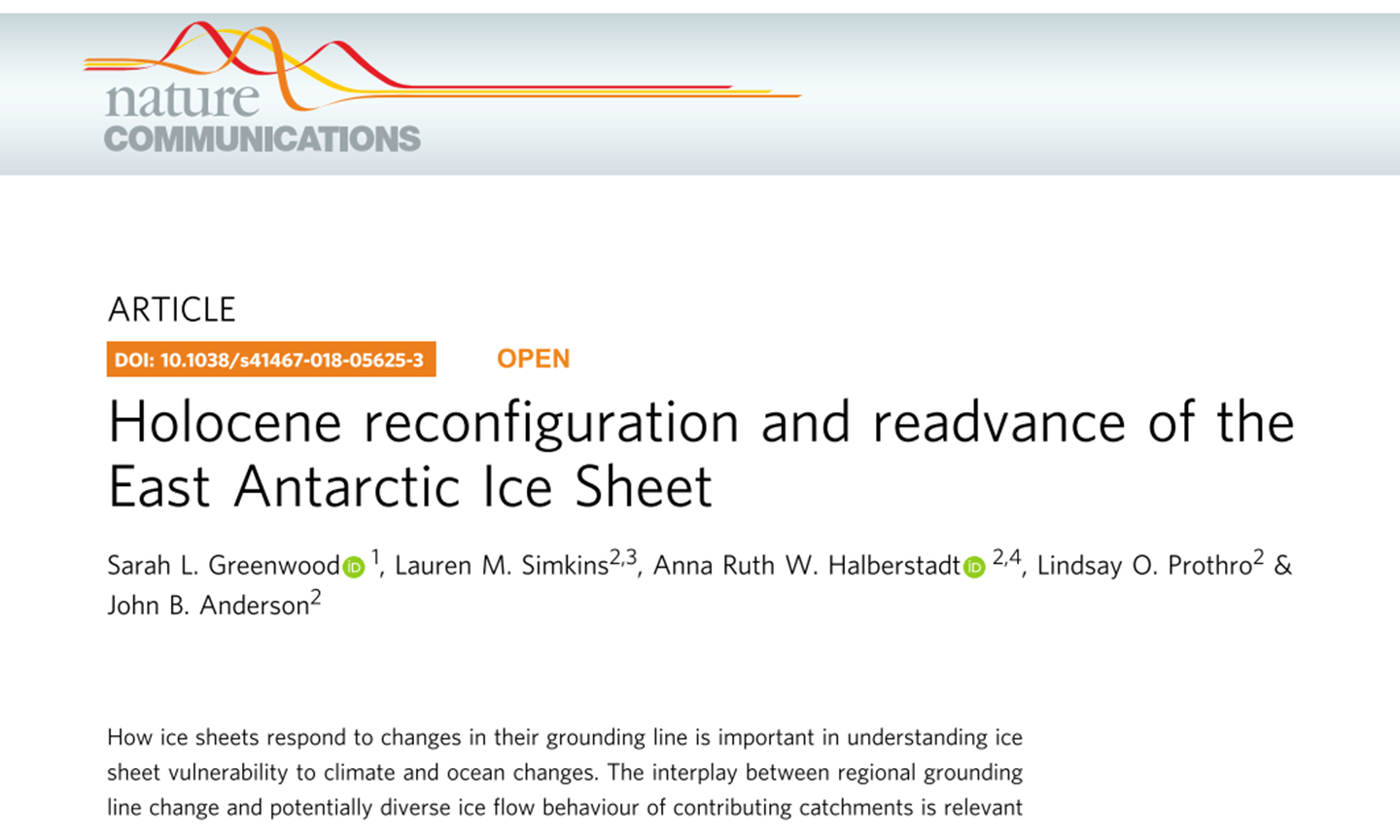Ross Sea dynamics from landforms and ice-sheet modeling
During the Last Glacial Maximum, ~20,000 years ago, the Antarctic Ice Sheet was much larger and thicker than today, and extended to the continental shelf break in many places before receding to the modern configuration. Glacial landforms and sediments associated with ice advance and retreat are preserved on the seafloor. These features tell us that within the Ross Sea, ice-sheet retreat was influenced by regional topography and seafloor geology (Halberstadt et al., 2016), as well as subglacial meltwater (Simkins et al., 2017) and properties of the unconsolidated sediment underlying ice streams (Halberstadt et al., 2018).
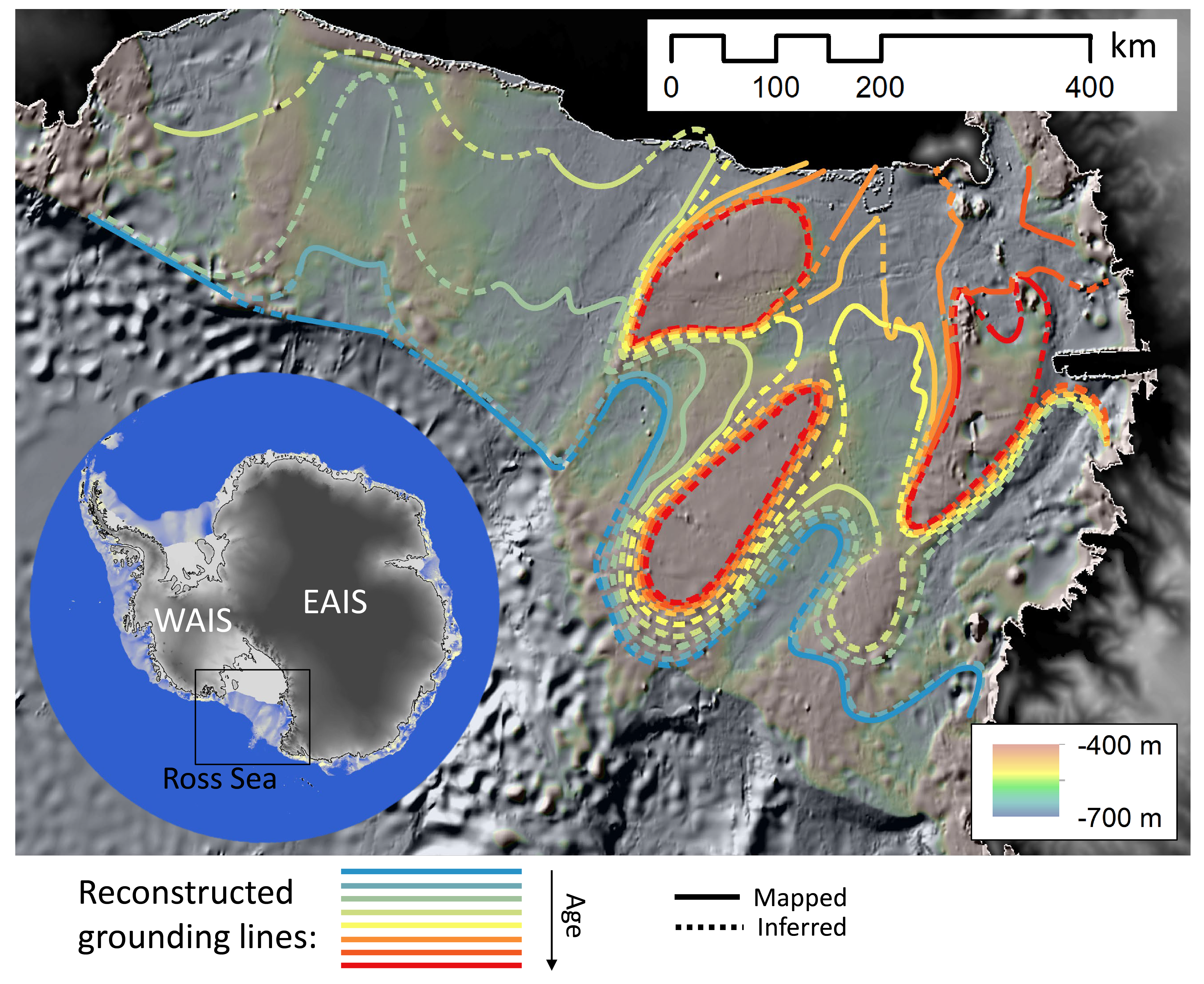
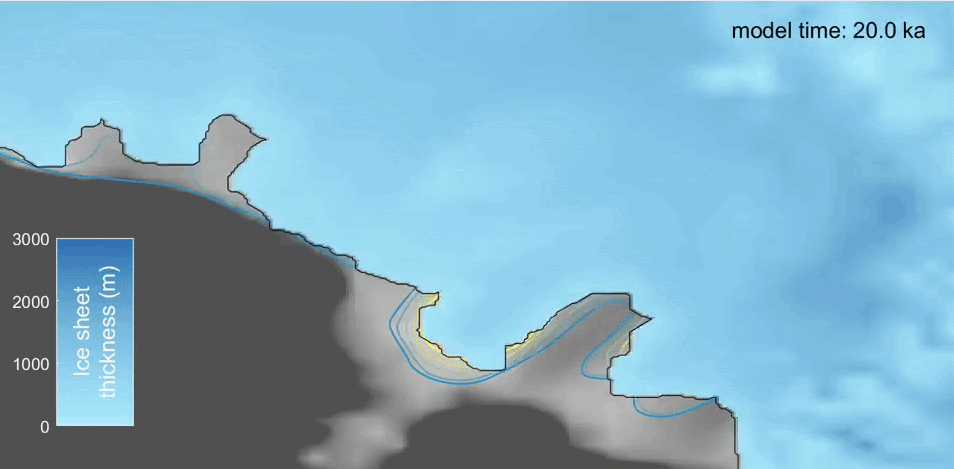
Retreat patterns of the Antarctic Ice Sheet based on seafloor landforms that record behavior of the grounding line, the point at which grounded ice transitions to a floating ice shelf. Each line marks a relative step in grounding-line retreat, starting with the Last Glacial Maximum (blue) and ending with ice pinned on banks (red). Prothro et al. (2020) use radiocarbon dating of seafloor sediments to establish the ages of these grounding-line positions.
Numerical ice-sheet modeling can link these reconstructions of ice-sheet retreat with the physical mechanisms that influence glacial behavior. This video shows how the grounding line fluctuates and eventually retreats throughout the last deglaciation (ice shelves are not shown here).
Read more about Ross Sea deglacial dynamics reconstructed from geologic data:
